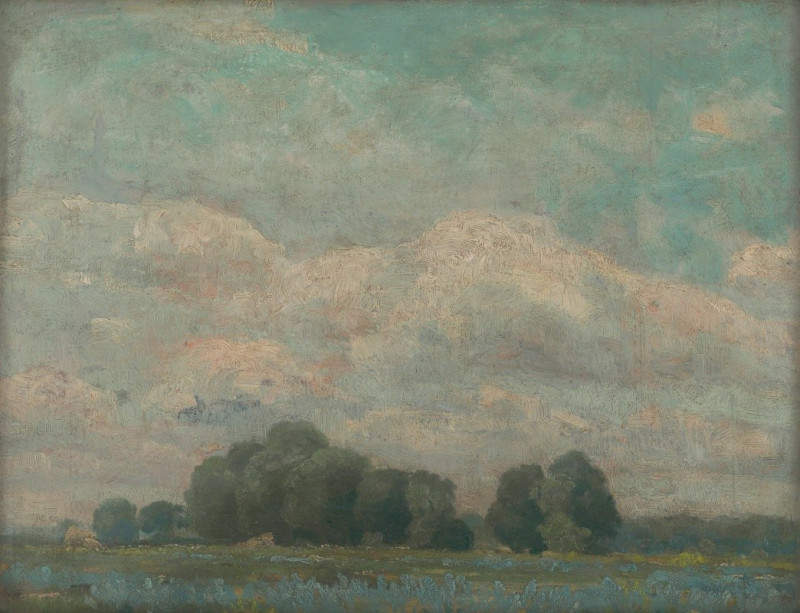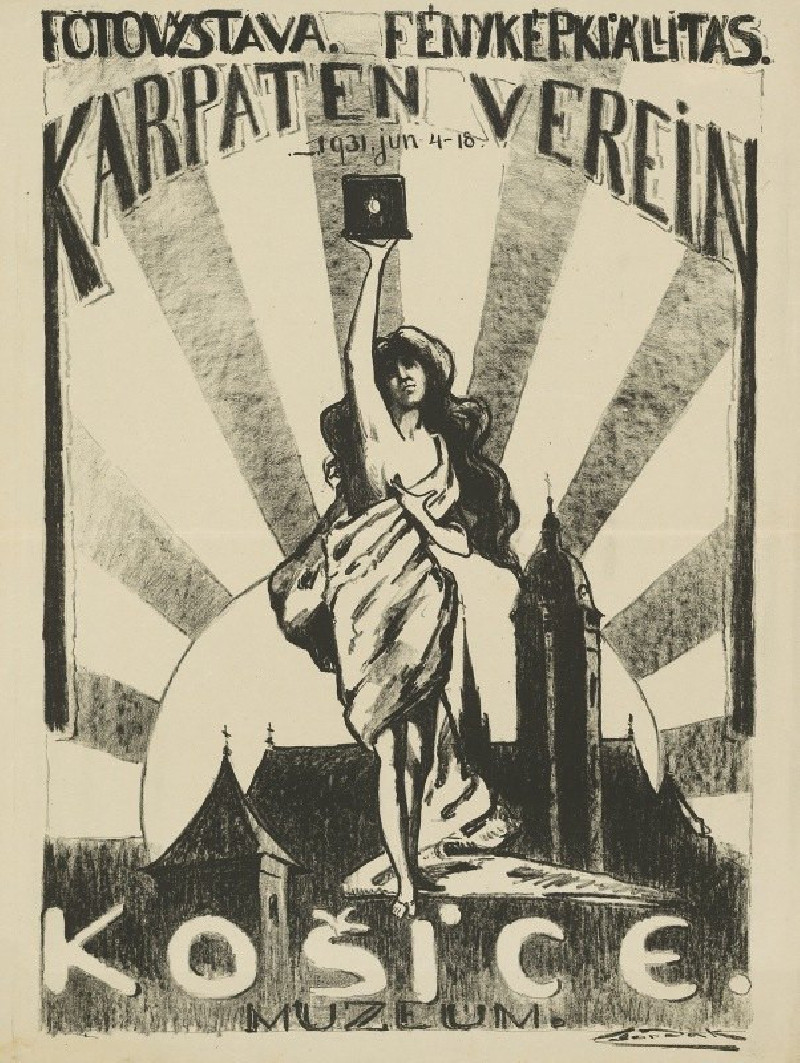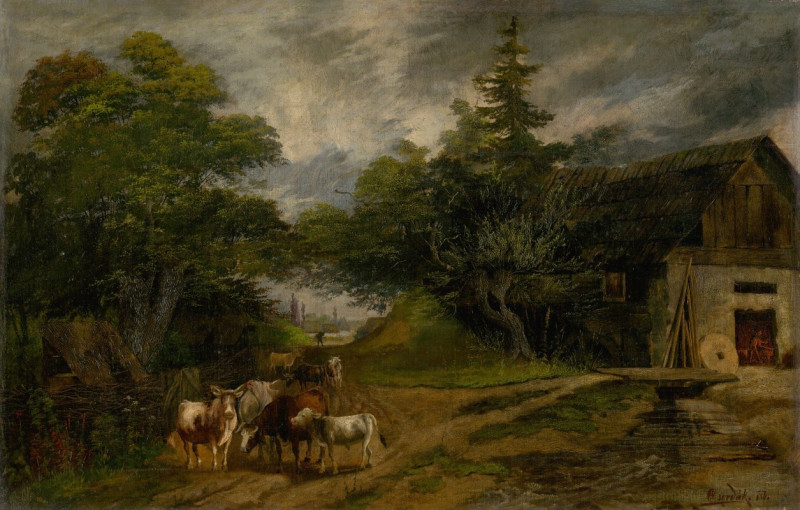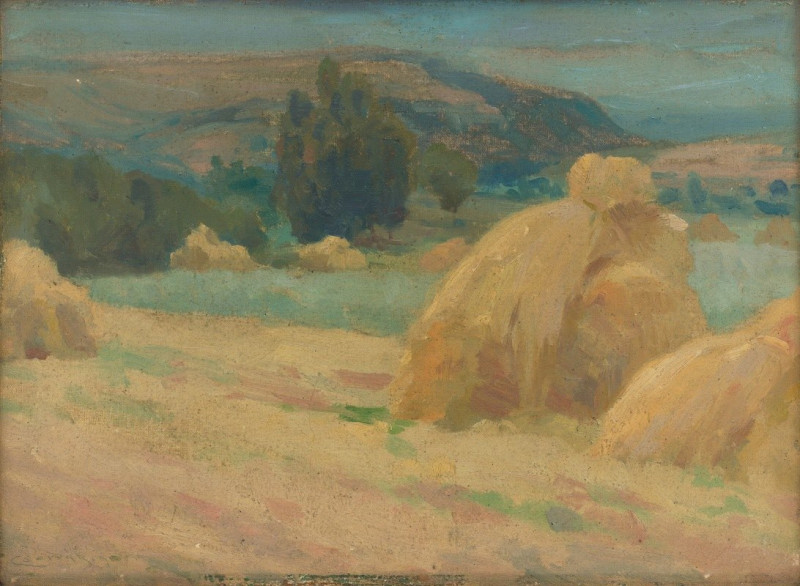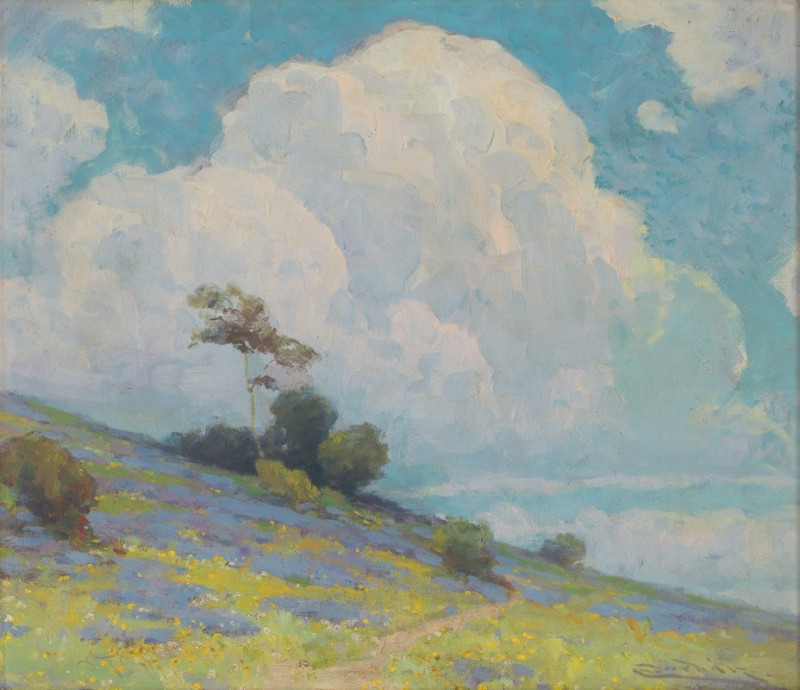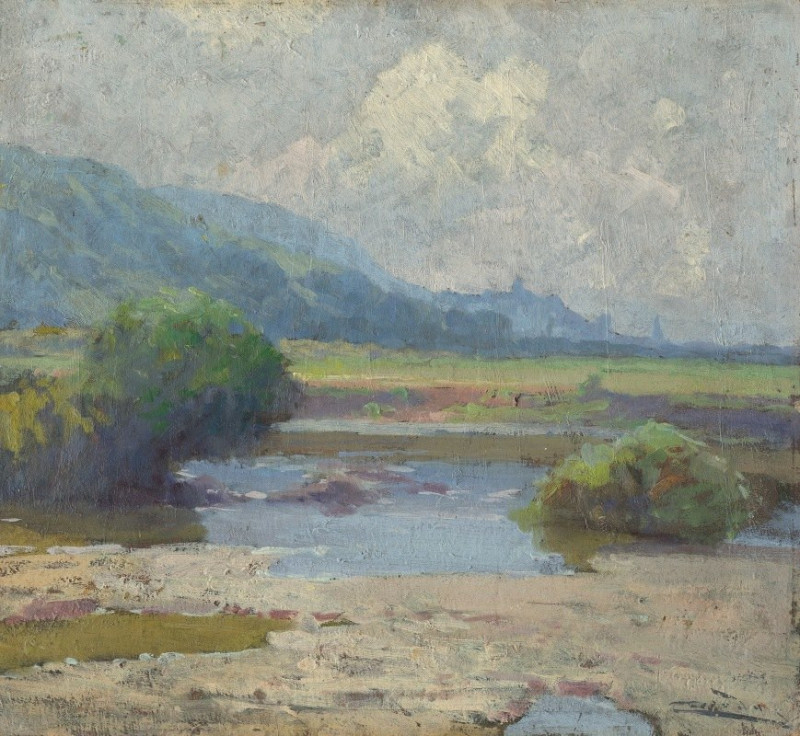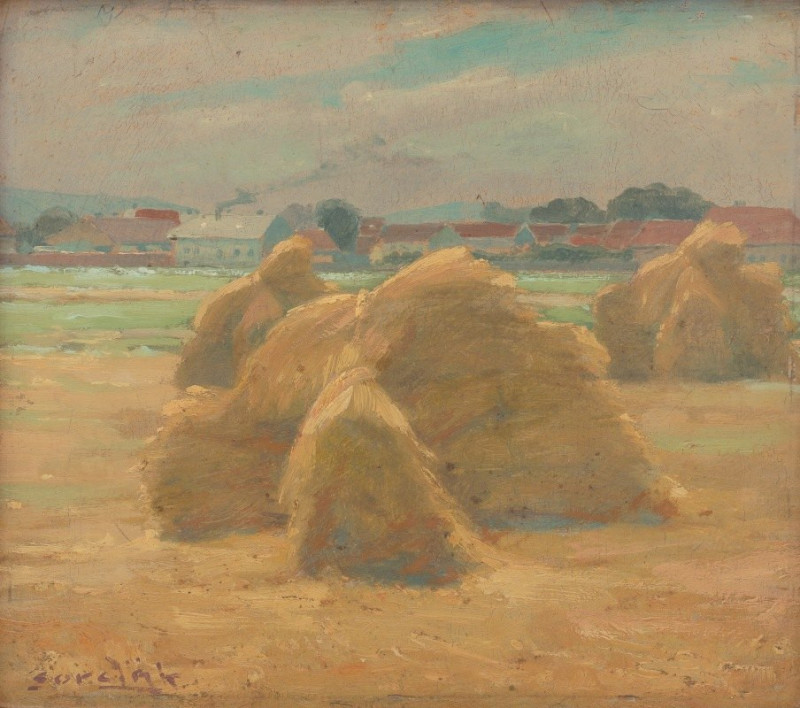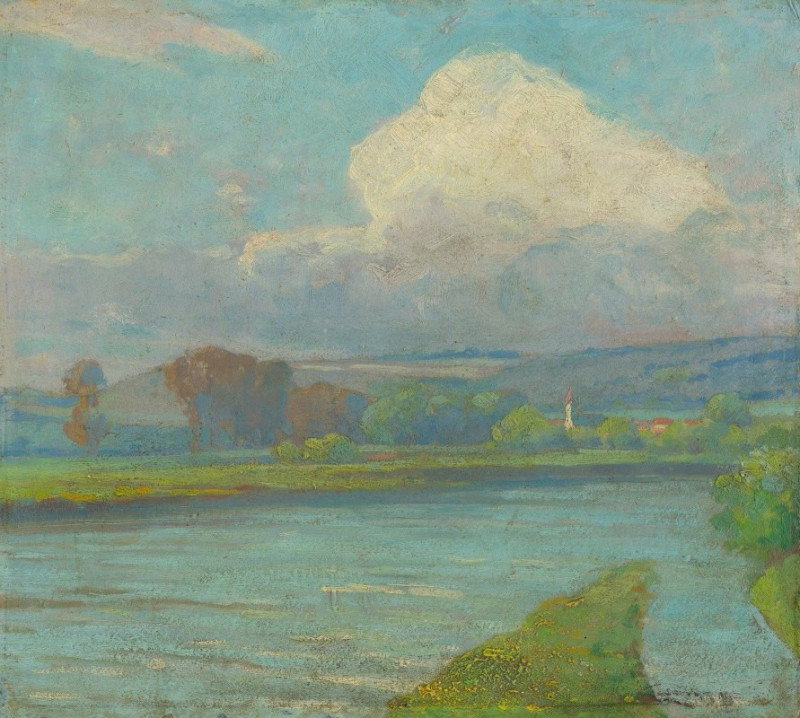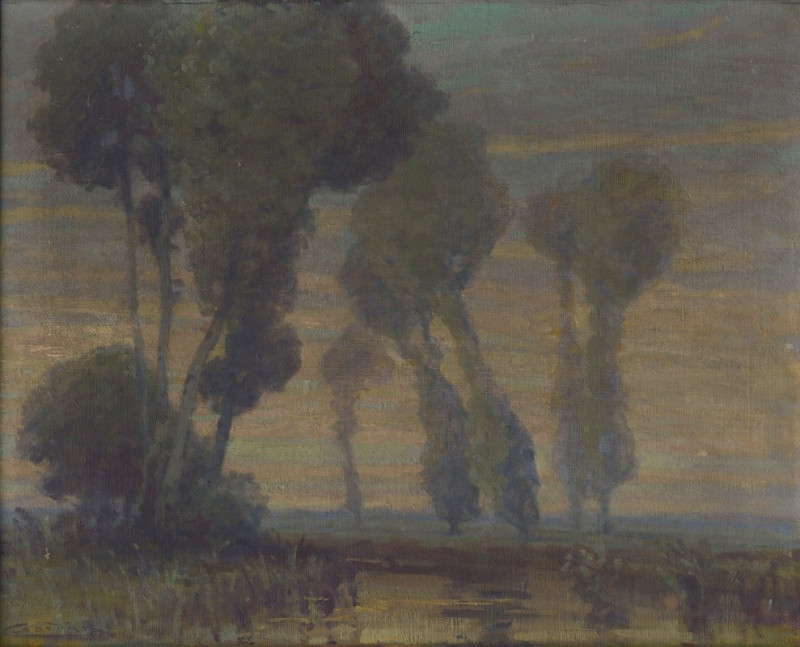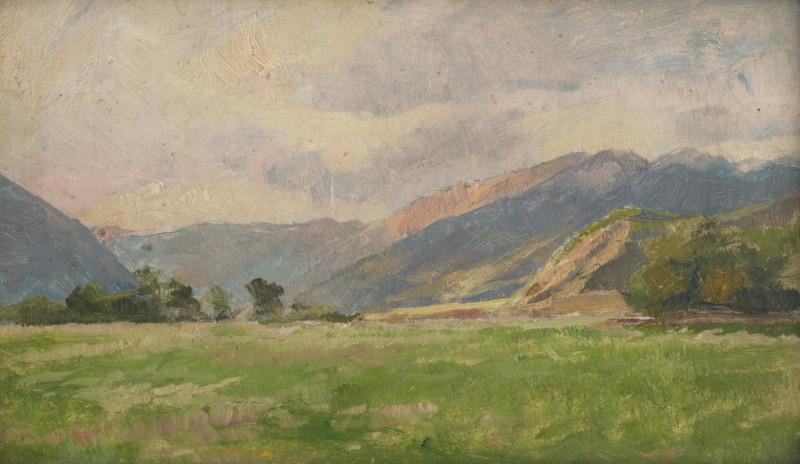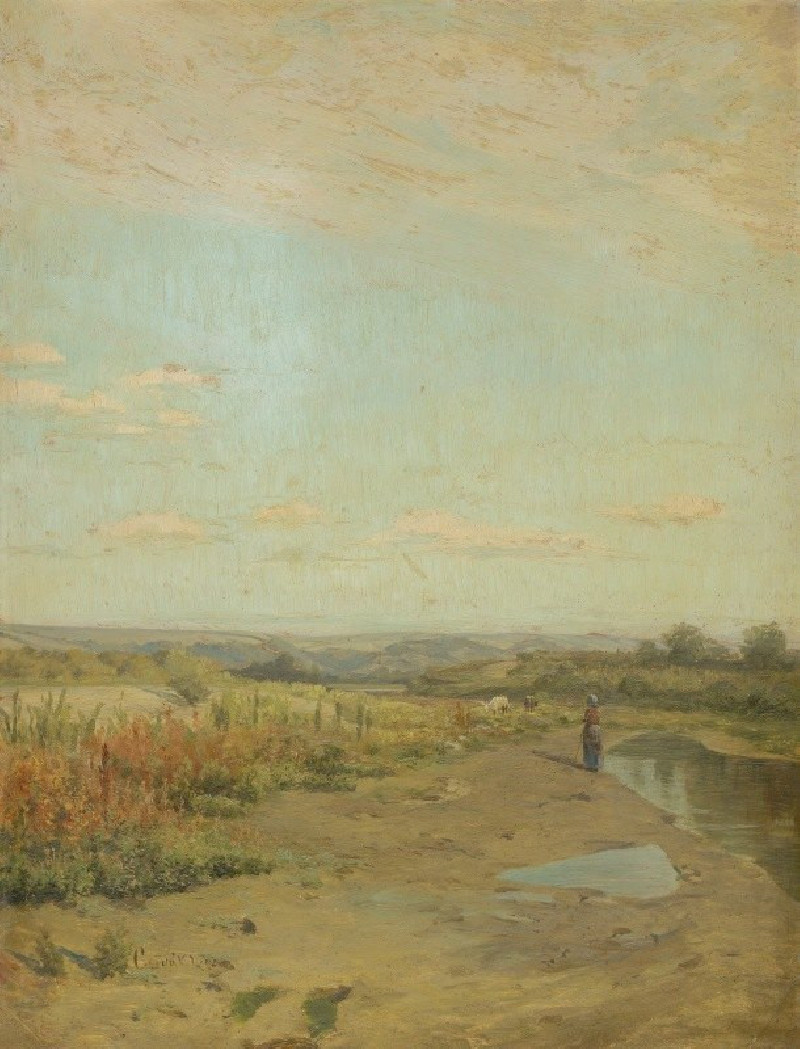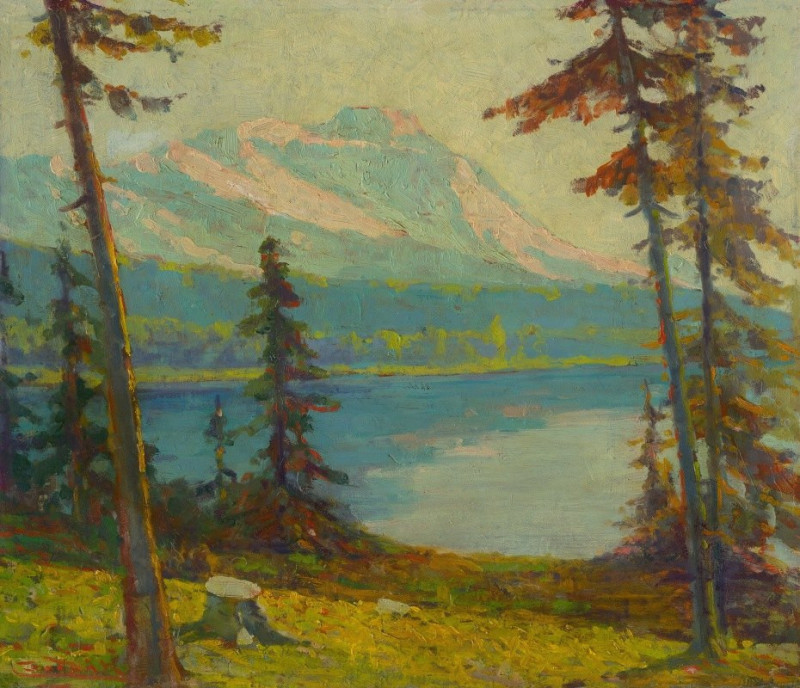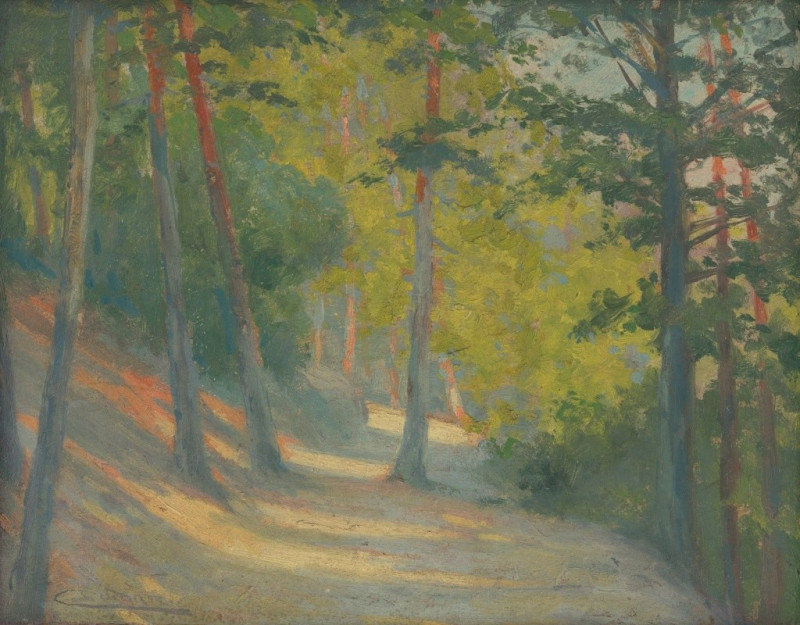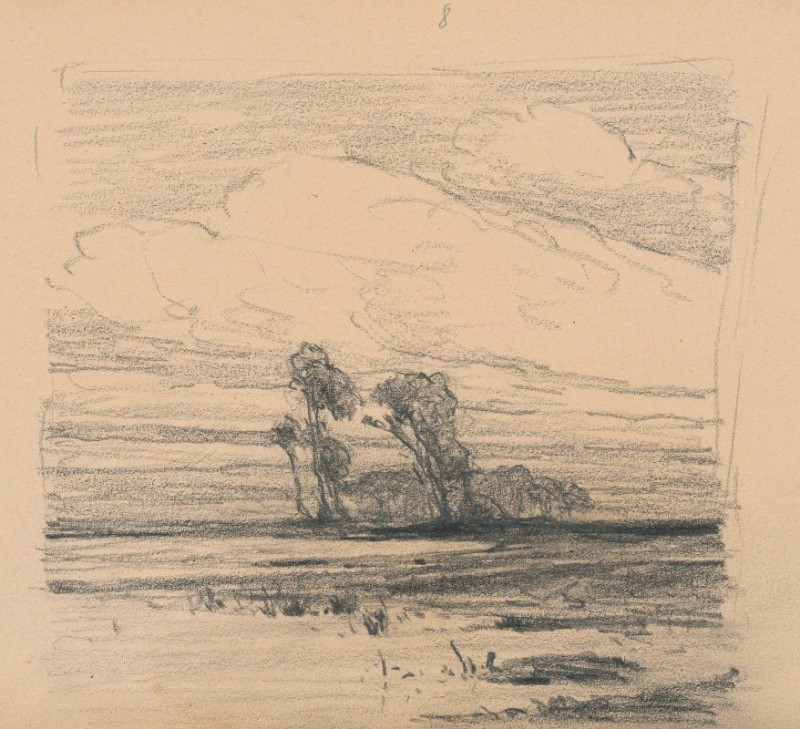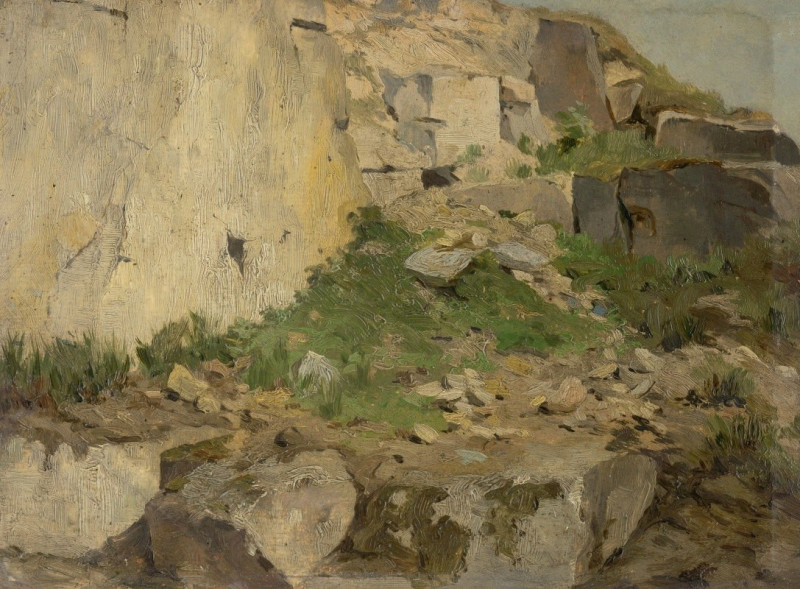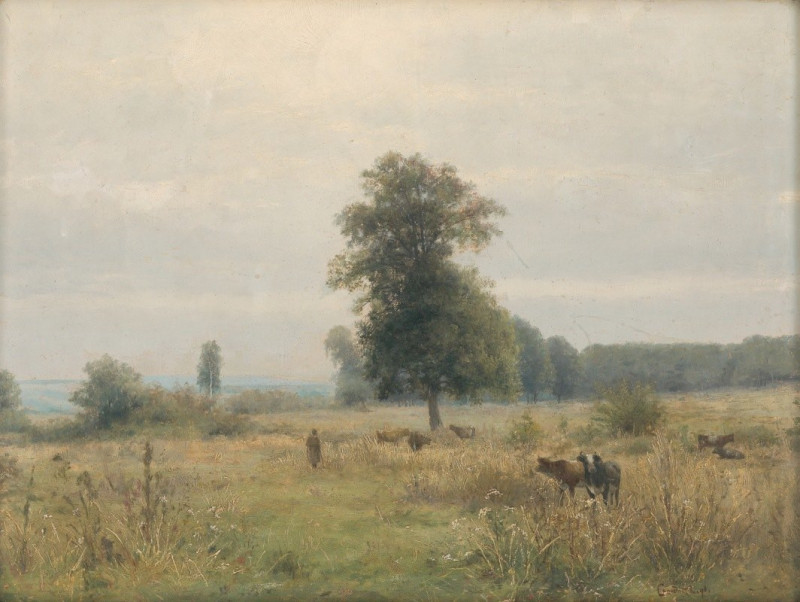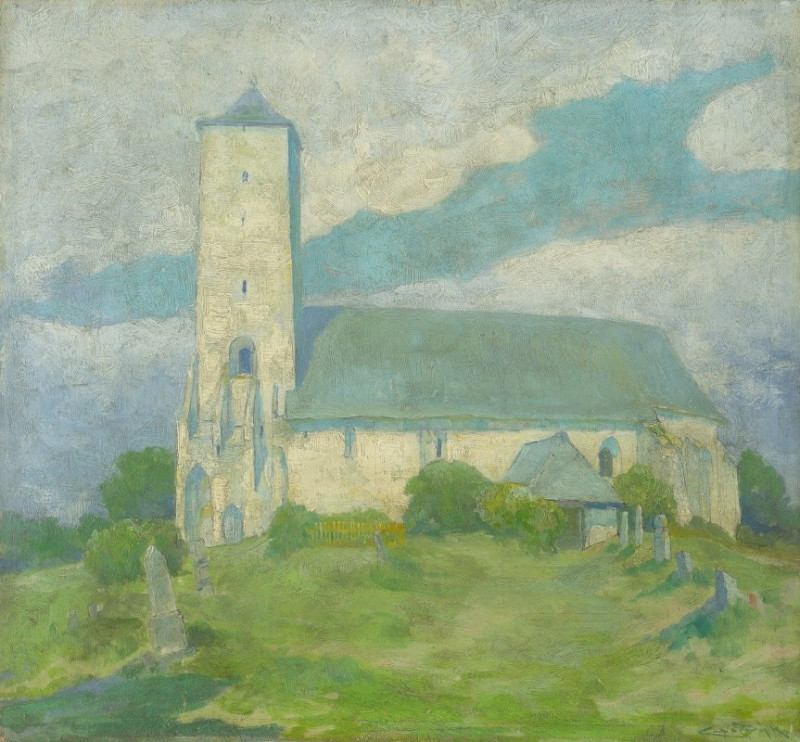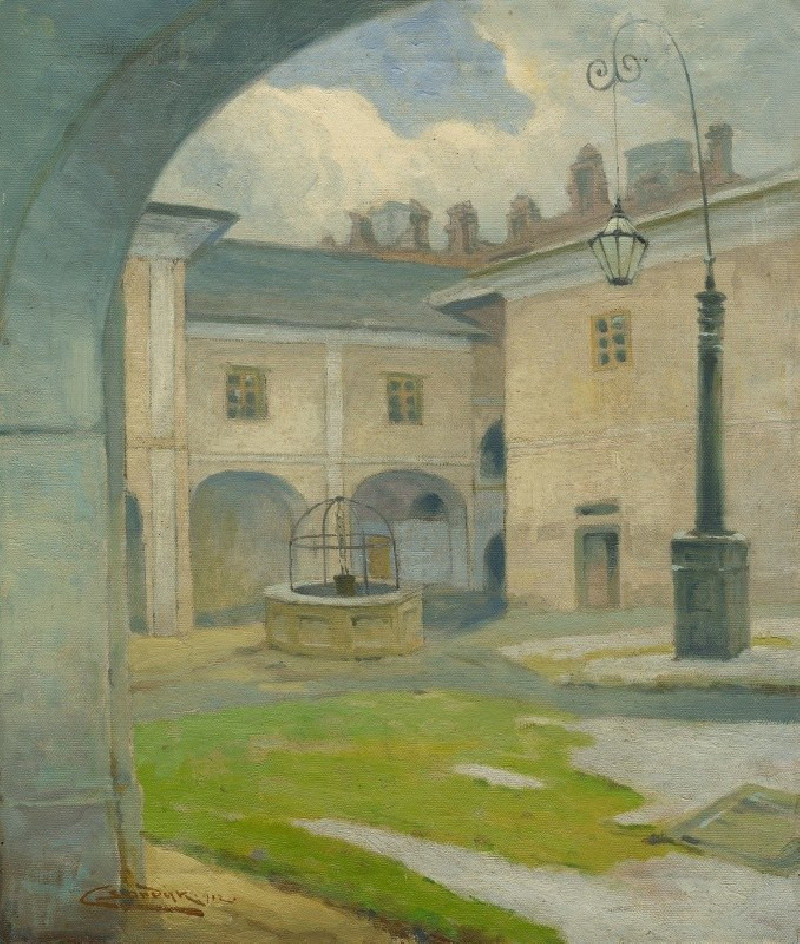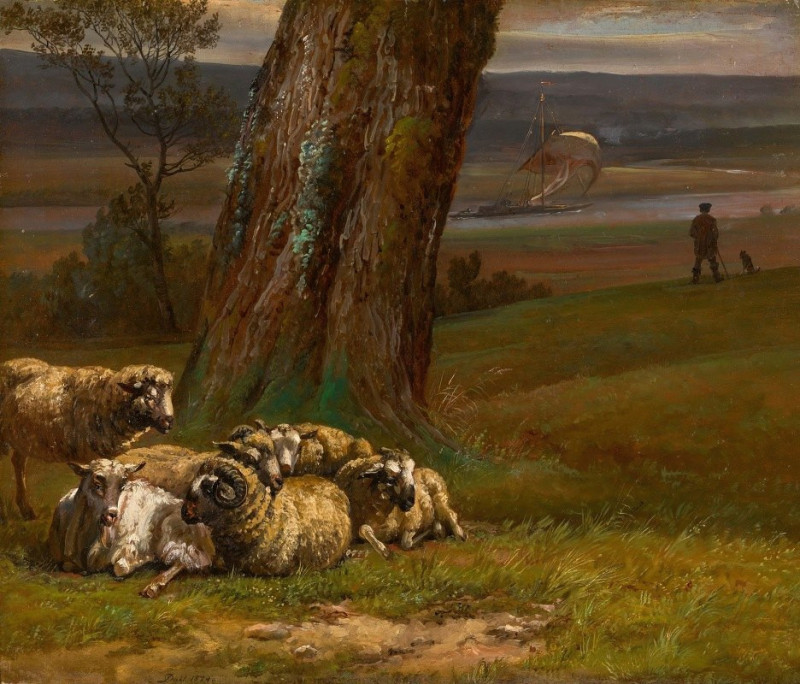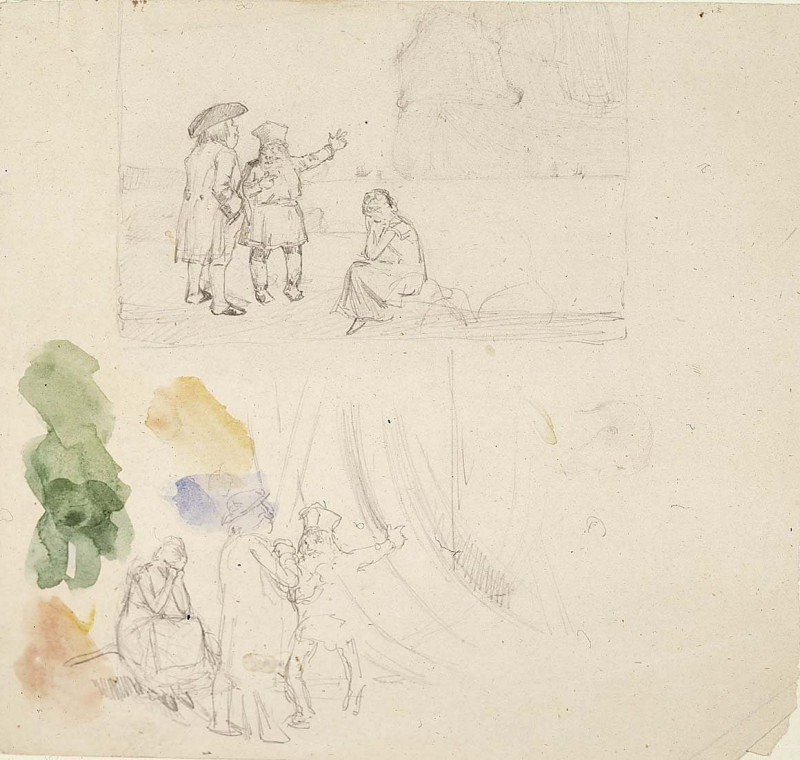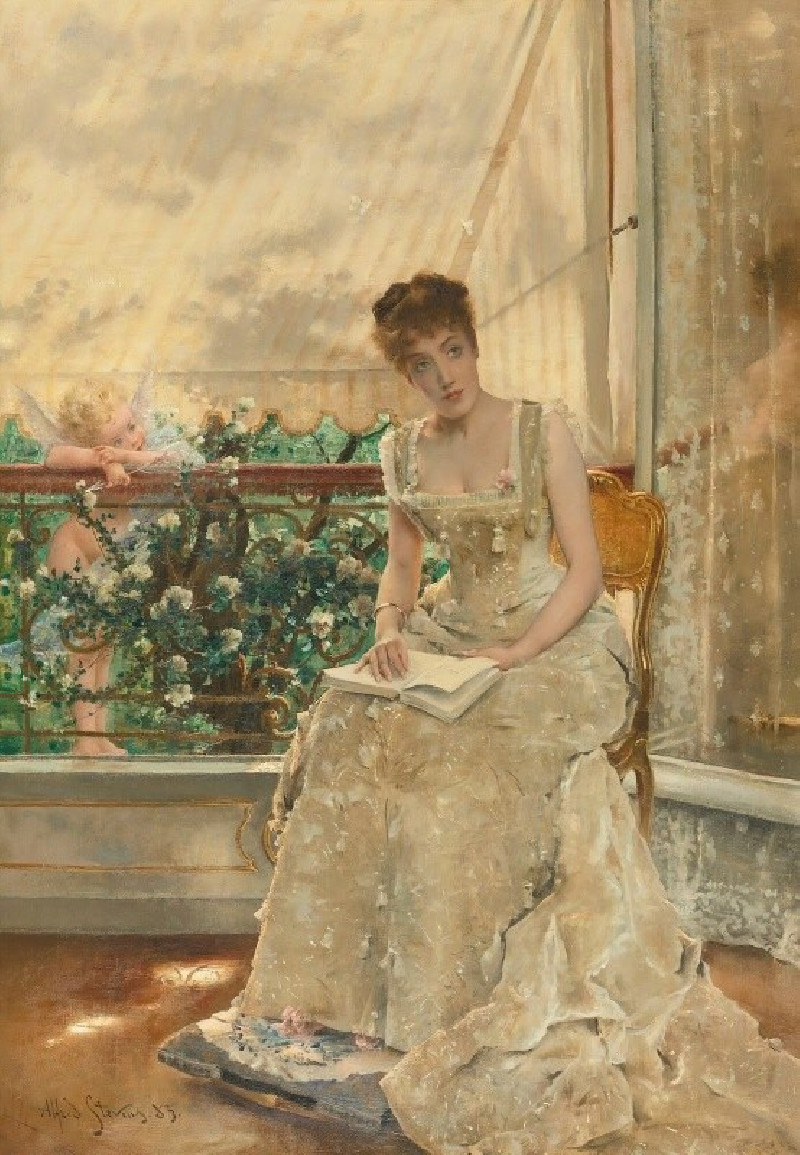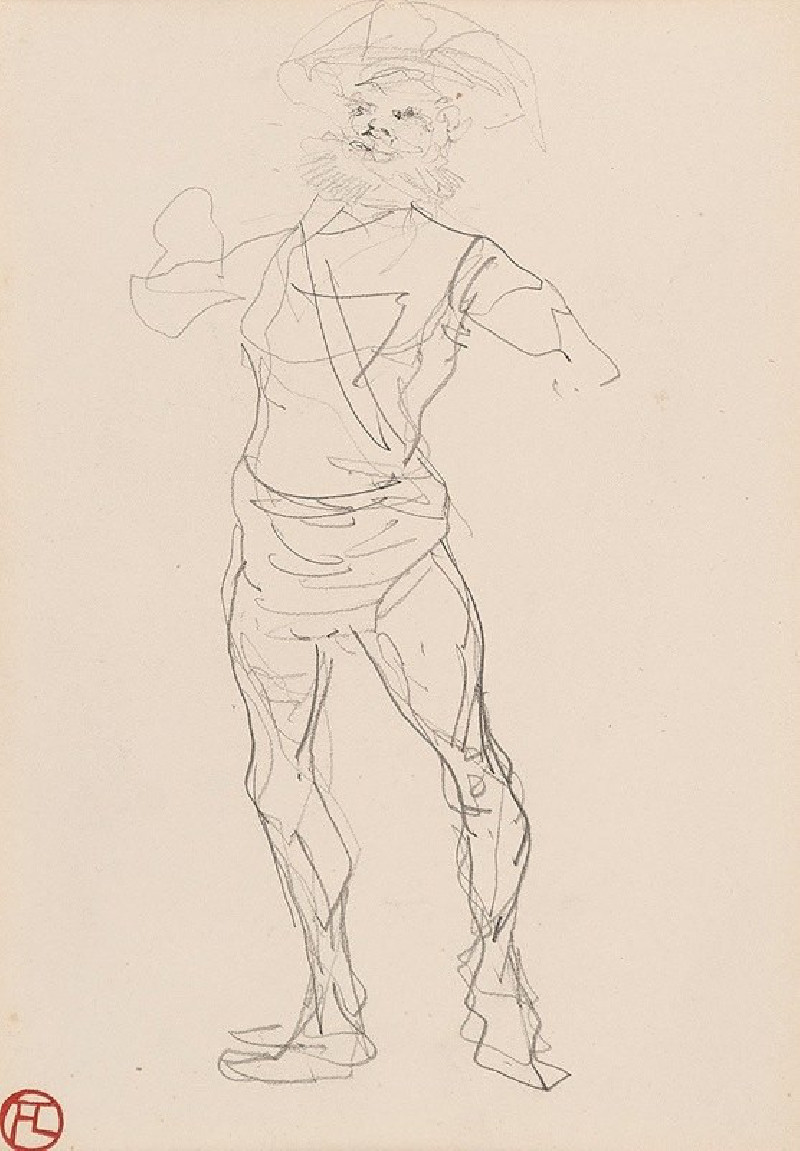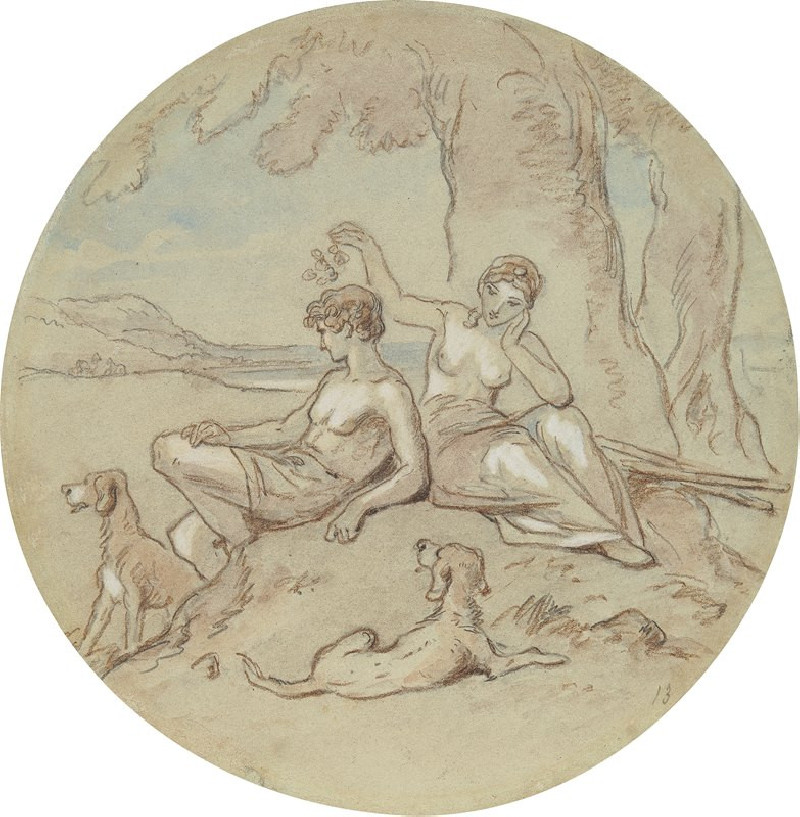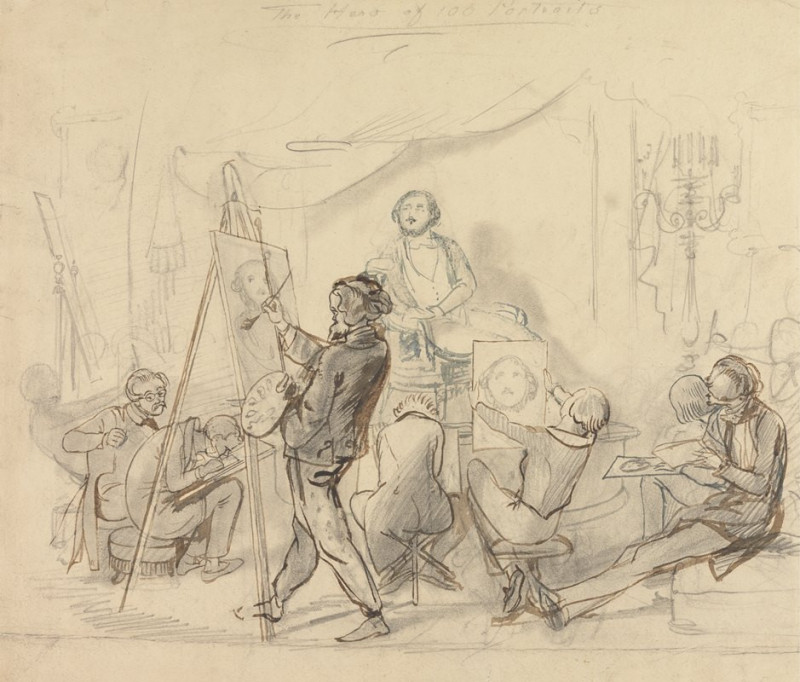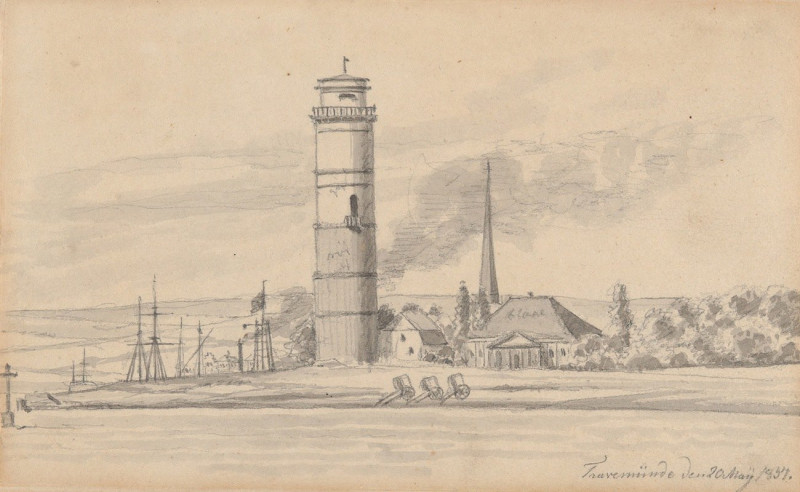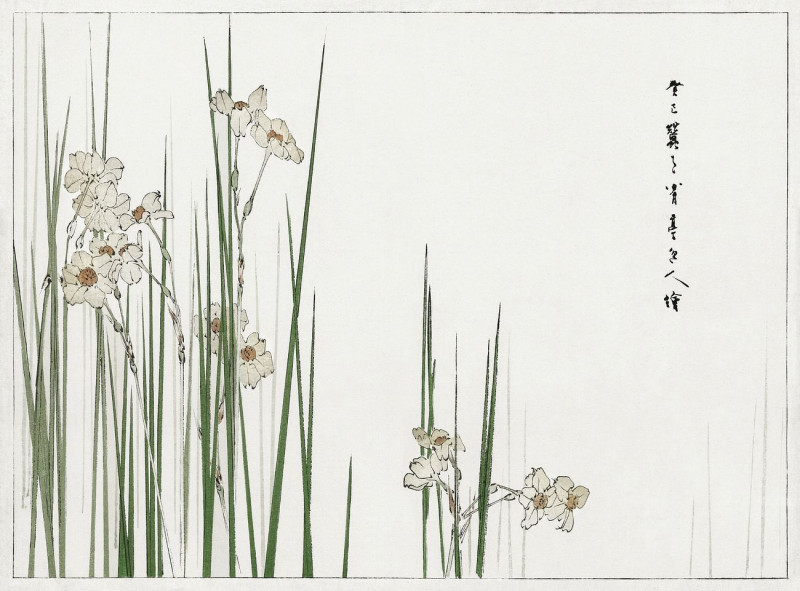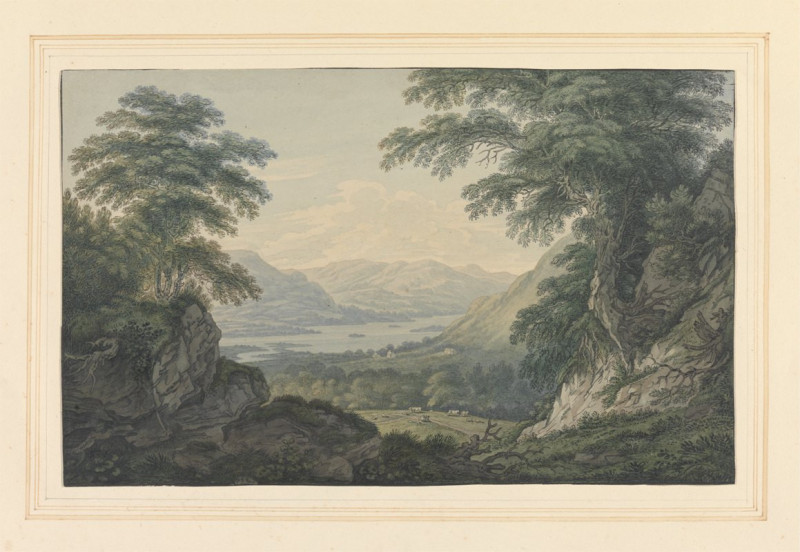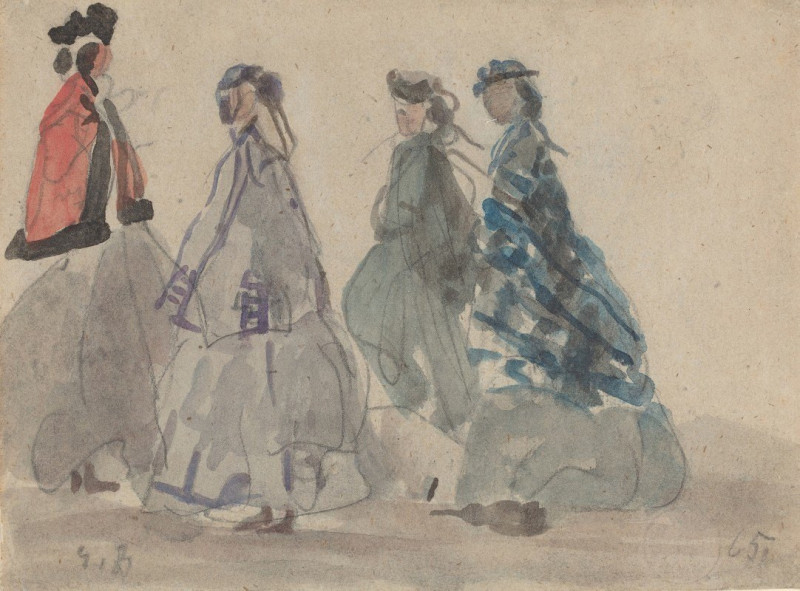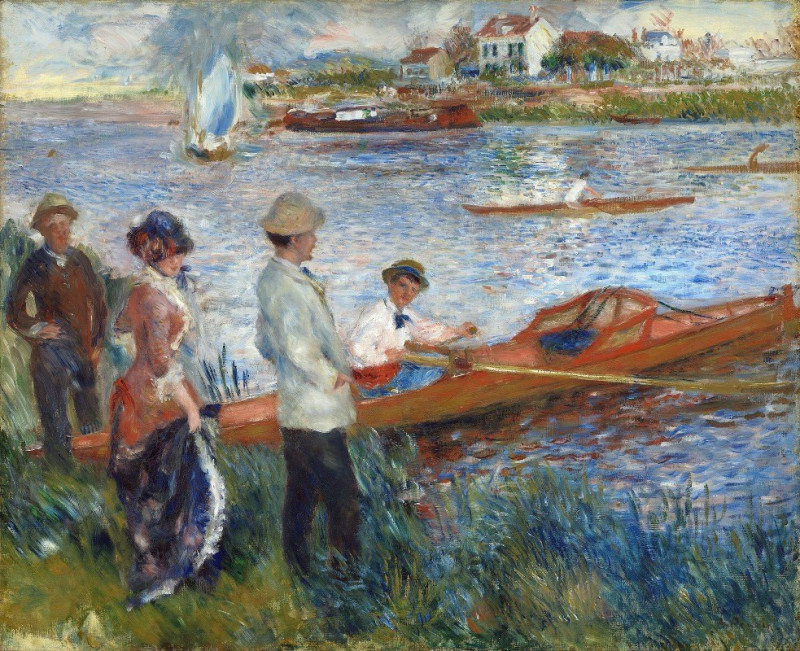Meadow with bushy trees (1910–1915)
Technique: Giclée quality print
Recommended by our customers
More about this artwork
Ľudovít Čordák's painting "Meadow with Bushy Trees," painted between 1910 and 1915, offers a serene and textured representation of a rural landscape. This artwork vividly captures the expansive beauty of a meadow under a vast sky, predominantly utilizing a palette of soft blues and earth tones that evoke a tranquil, almost dreamlike atmosphere.In the foreground, a series of bushy, verdant trees cluster together, forming a dark, dense patch that draws the viewer’s eye as a focal point. These trees contrast strikingly with the open sky and the softly undulating hills in the background, which are rendered with delicate, brushy strokes that suggest the gentle movement of clouds or a light breeze.The middle ground is subtly highlighted by hints of greenery and what appears to be a field, possibly of wildflowers or grass, stretched out towards the horizon. This element adds a sense of depth and space to the composition, inviting the viewer to wander through the landscape visually and emotionally.Čordák’s mastery in blending colors and creating textures is evident in how the sky merges almost seamlessly with the mountains, giving an ethereal quality to the scene. The use of light and shadow, combined with a masterful application of color, enhances the peaceful yet somewhat melancholic feel of the painting."Meadow with Bushy Trees" is more than just a visual piece; it is an invitation to reflect on the beauty and quietude of nature, rendered beautifully through Čordák’s impressionistic style.
Delivery
Returns
Ludwig Deutsch was an Austrian painter who settled in Paris and became a noted Orientalist artist.
Details of Ludwig Deutsch's life are obscure. He was born in Vienna in 1855 into a well-established Jewish family. His father Ignaz Deutsch was a financier at the Austrian court. He studied at the Vienna Academy of Fine Arts 1872–1875, then, in 1878, moved to Paris where he became strongly associated with Orientalism.

